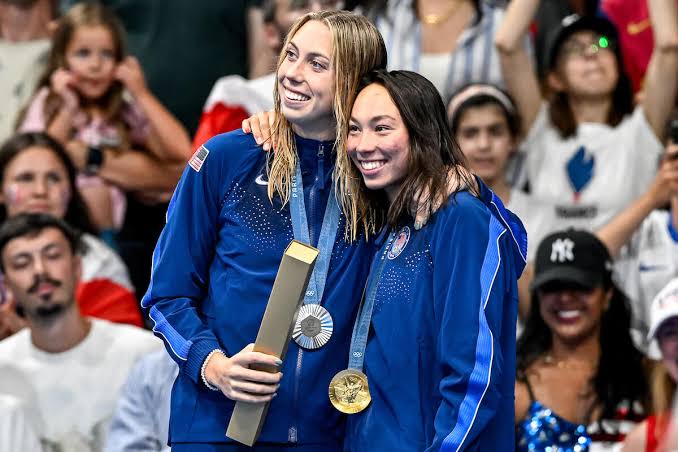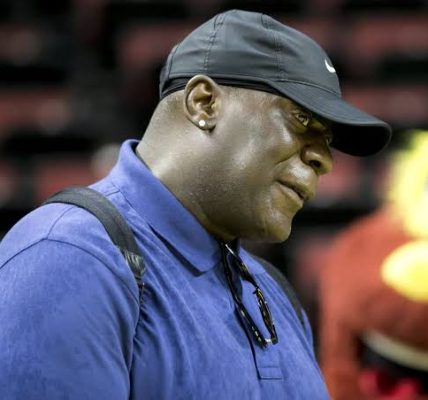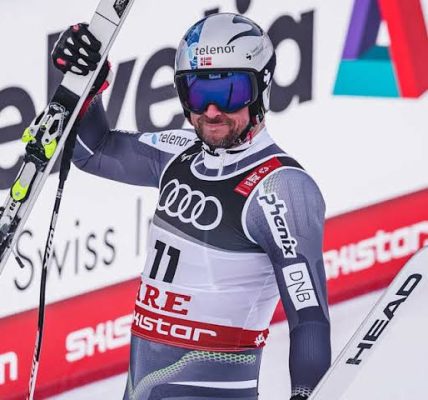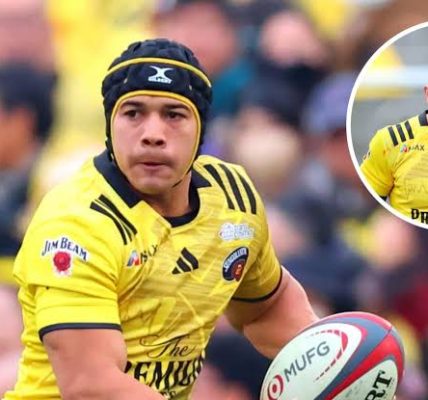Skip to content
2025 World Championship Previews: Once More Unto the Breach for the US & China in Mixed Medley.

BY THE NUMBERS – Mixed 400 Medley Relay
-
World Record: 3:37.43 – USA (R. Murphy, N. Fink, G. Walsh, T. Huske), 2024
-
World Junior Record: 3:44.84 – USA (W. Grant, J. Matheny, T. Huske, G. Walsh) – 2019
-
Championship Record: 3:38.56 – USA (M. Grevers, L. King, C. Dressel, S. Manuel), 2017
-
2023 World Champion – China (Xu J., Qin H., Zhang Y., Cheng Y.) – 3:38.57
-
2024 Olympic Champion – USA (R. Murphy, N. Fink, G. Walsh, T. Huske) – 3:37.43
I seem to always be saddled with the mixed medley relay preview, and I’ve accepted it (okay, I’ve more than accepted it, I love it; it’s the first preview I select to cover) Perhaps it has to do with the fact that I like the puzzle of making relays and finding the best combinations, a trait I have put to good use twice to become a Masters All-
 American twice in a mixed relay (You can trust me on that fact, and I’m self deprecating enough to say that both times were in short course meters, and one year I was a part of the only relay in our age category to contest the event that year).
American twice in a mixed relay (You can trust me on that fact, and I’m self deprecating enough to say that both times were in short course meters, and one year I was a part of the only relay in our age category to contest the event that year).
In a relay where there are six possible combinations of gender order per relay and with eight lanes in the final, there exist 1,679,616 different possible combinations. (In consultation with people smarter than me, Barry Revzin pointed out that while that number is correct, it only applies to the relay being MMFF or MFMF, so the number could be much higher if one were to include different swimmers in the relays, ie, Walsh or Huske on the fly leg.
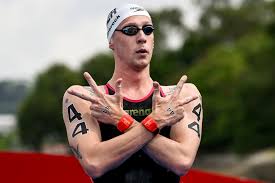 Laura Rosado concluded with, “This is why mixed medleys make my head hurt,” and I concur.
Laura Rosado concluded with, “This is why mixed medleys make my head hurt,” and I concur.
Fortunately, we won’t go that far in depth. Many teams are likely set in a specific one or two relay orders, but the medalists from the past three worlds have the flexibility to put forth any relay combination and still have the potential to medal, but some combinations are far more likely to do so. Therefore, it is key to find the best possible combination beforehand but also to know that as a swimmer’s form can change throughout the week, relay line-ups must remain fluid, so what we may predict likely could change. Last summer, in the Olympics, only the men’s 100 fly had yet to be swum before the relay, so coaching staffs had a great picture of where they stood; however, that’s not the case in Singapore.
The Mixed Medley relay final takes place at the midway point of the meet, closing out Day 4 of 8. The women’s 100 free and the men’s 100 fly both take place after this relay, and the men’s 100 free prelims and semifinals occur in the same sessions. That said, nations that have the depth to field a 4×100 free relay will be able to determine their fastest sprinters, as these events both occur on day one.
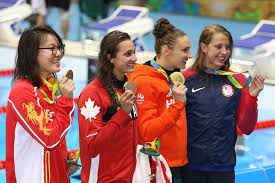 But that is enough of a preamble, so let’s dive right in (pun intended).
But that is enough of a preamble, so let’s dive right in (pun intended).
“What’s past is prologue”
I normally start these previews with a recap of the previous year’s meet, but with the three medalists from Fukuoka being the same three from Paris, it seemed easier to cover the results while we discuss each teams options, and yes, Braden, I’m going back to the well with quotes from “the Bard”.
USA

Team USA posted the top time in the prelims in 2023, swimming a time of 3:40.47. The only team to make a full swap, they brought in three eventual medalists —Ryan Murphy, Nic Fink, and Torri Huske —as well as 4th place finisher Kate Douglass to anchor. However, the turnover didn’t turn out to be that productive as they cut just .28 from the prelims time and had to settle for the bronze. While much has been spoken about the US’s performance, especially about Huske’s 58.19 fly split, even by Huske herself in a candid interview with SwimSwam’s YanYan Li, the team, led by Huske, rebounded in a big way the following summer.
After seemingly ceding the top spot amongst US butterflyers to Gretchen Walsh after her World Records, Huske got the better of her compatriot in the Olympic Final, collecting her first Olympic Gold. However, Huske’s freestyle ability proved to be a bigger asset to the US as she split the 2nd fastest split (52.06) in the entire Women’s 4×100 free relay and held off charges from Siobhan Haughey and Mollie O’Callaghan in the individual 100 (52.29) to collect the silver medal in both events.
The US was once again the fastest out of prelims (3:40.98) and once again made a wholesale switch off their relay. They started out again with Murphy and Fink leading the way, and sat .42 back of the Chinese. Walsh, the silver medalist, took on the fly duties, splitting 55.18 and handed things off to Huske with a lead of just .04.
With the ever dangerous O’Callaghan a second back, it looked to be a three-way race, but Huske pulled deep, splitting 51.88 to hold off China’s Yang Junxuan (51.96) and not only take the win but undercut the three-year-old WR by .15 as Team USA stopped the clock in 3:37.43.
While being the WR holder automatically puts you into the medal contention, the turnover for Team USA may be the edge China and Australia need to knock the Americans off the top of the podium.
With neither Murphy nor Fink competing at the 2025 US Nationals, the front two legs of the relay, should the USA stick with their MMFF pattern, on paper likely fall to Tommy Janton and Campbell McKean, two newcomers to the World stage. Janton won the 100 back in a new PB of 53.00, while McKean, a recent high school graduate, touched first in the 100 breast, with a new PB of 58.96, McKean’s time is faster than what Fink swam at the 2024 Trials (59.08), but with Janton back nearly a second on Murphy (52.22), the US may look to deviate from their MMFF order. Using times from the US Nationals, the chart below shows the fastest combinations for the US and yield a surprising result.
STROKE
|
MMFF
|
2025 TRIALS Times
|
FMFM
|
2025 TRIALS Times
|
Back
|
Janton
|
53.00
|
Smith
|
57.69
|
Breast
|
McKean
|
58.96
|
McKean
|
58.96
|
Fly
|
Walsh
|
54.76
|
Walsh
|
54.76
|
Free
|
Huske
|
52.43
|
Alexy
|
47.17
|
Total
|
|
3:39.15
|
|
3:38.58
|
The fastest order for the US, appears to be FMFM, the same order that we calculated to be the fastest last year, where the team of Regan Smith, Fink, Walsh and Chris Guiliano added up to a time of 3:38.90. This year, Smith, McKean, Walsh and Jack Alexy sum to 3:38.58, with most of the improvement coming from Walsh dropping .55.
This order makes some sense as Smith and Walsh are the respective WR holders in the 100s and Alexy’s time is slower than his 46.99 from the same meet, so they could hypothetically drop even more time. But even just using that time of 3:38.58, and not taking into account Smith’s, Walsh’s, and Alexy’s PB, if one were to subtract a conservative .40 from each of the last three legs for relay starts, the US are under the WR time.
That said, the USA relay order will really come down to the backstroke and breaststroke legs. It seems unlikely that the US will use Kate Douglass or Lilly King in this relay, but they could make a prelims appearance. If Janton (or second-place finisher, Jack Aikins) makes significant time drops, they could be tapped, and that allows Huske to anchor. If they don’t drop time or if Smith looks on form, then I would expect her to be the backstroker.
To head off any comment discussions about Shaine Casas, who has a 100 back PB of 52.51, he likely has the semifinals of the 200 IM, the event right before the finals of this relay, and seems highly unlikely to pull off that double. In fairness, Smith likely has the semifinals of the 200-meter butterfly that evening as well.
China
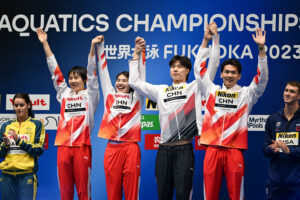
China (Xu, Qin, Zhang, Cheng)
World Aquatics Championships
Fukuoka (JPN)
14-30 JULY 2023
The Chinese in 2023 got off to an explosive start with backstroker Xu Jiayu swimming faster than his individual performance and 100 breast gold medalis Qin Haiyang ripping a 57.31 breaststroke split to give the Chinese an insurmountable lead as Zhang Yufei‘s 55.69 only further distanced her team from the US and despite Australia’s Shayna Jack‘s 51.53, the Chinese’s lead was too much as Cheng Yujie anchored in 53.15 to stop the clock in 3:38.57.
Fast forward one year, and the Chinese looked to be a strong bet to contend for gold as Qin, had broken the 200 breast World record in the fall and they had improved their freestyle leg as Yang Junxuan set a new National Record in the 100 free at 52.68. However, Qin struggled in the individual 100 final, finishing in 7th (59.50). He performed better in the relay, splitting 57.82, but was still half a second back of his time from the previous year. Despite that, Yang’s impressive 51.96 anchor kept them close over the last 100 and stopped the clock in 3:37.55, not only a new Asian record, but also under the former WR.
In looking at the performances this year, the Chinese seem to be stuck with the order of MMFF. Xu won the men’s 100 back in 52.49, not far off his 52.13 in Paris on the relay, with Qin’s 58.61 from Chinese nationals faster than his individual performance in the final. The backhalf is a little more open as Zhang Yufei, the Olympic bronze medalist, was off form and took second by .09 as Yu Yiting took the win in 57.30. Yang Junxuan did not contest the 100 free, with the win going to Qinfeng Wu in 53.27. The quartet of Xu, Qin, Yu, and Qinfeng have an add up time of 3:41.67, which is a ways back of the US’s.
That relay does not, however, tap into China’s main strength, the men’s 100 free. Long a struggle for the Chinese women, Wan Letian who was 1:00.06 to place 12th in Paris in the 100 back, produced a time of 59.21, nearing her PB of 59.02, and helps make the decision to use the men’s 100 freestyle WR Pan Zhanle a little easier. Pan won the 100 at the Chinese nationals in 47.77, but with a PB of 46.40, he easily could be five seconds back of any team with a female freestyle and make up the difference. Going FMFM, the Chinese find themselves at 3:42.89, and while not amongst their top three fastest combinations, the time drops possible from Zhang and Pan could easily drop three seconds, and if one were to drop an additional 1.2 for relay starts, the Chinese could find themselves back under the 3:39 range.
“My Kingdom for a Breaststroker”
Australia

Owners of the World Championships Silver medalists from 2022 and 2023 (and 2024), the Australians haven’t topped the podium since 2019, when Cate Campbell split 51.10 to run down Simone Manuel (52.37) and grab the touch by .02, 3:39.08 to 3:39.10.
In Fukuoka, they again got the better of the Americans, finishing just a half a second back of the Chinese as Kaylee McKeown, Zac Stubblety-Cook, Matthew Temple, and Shayna Jack combined to stop the clock in 3:39.03. In Paris, unsurprisingly, the Aussies played to their strengths, using McKeown and O’Callaghan on the first and last legs, and Temple reprised his role on butterfly and split 50.42 to move his team from 5th into 3rd.
Breaststroke, long a weakness for the team, was filled admirably by Joshua Yong. Yong missed the team in 2023, but had a strong performance at his Olympic trials, placing 2nd in a time of 59.48. Yong advanced successfully to the semifinal, finishing 12th overall in 59.64, but stepped up when needed and split 58.43 on the relay to help the Aussies claim bronze in a new National record of 3:38.76.
However, Yong will not be able to pull another rabbit out of his hat, as he placed 4th at trials. Not too can Sam Williamson, who entered 2024 as a strong contender to final in the 100 breaststroke, as he has been out of competition since April with a knee injury. Ditto for former 200 breaststroke World Record holder Stubblety-Cook, who missed the team in the 100 and withdrew from the 200 and the whole meet with a back injury.
But from misfortune arises opportunity, and all eyes will be on Nash Wilkes, who won the 100 breast in a new PB of 1:00.19. Despite 16-year-old Sienna Toohey winning the 100 breast in 1:06.55 and becoming the youngest Aussie under 1:07, the team’s best chance to medal still looks to involve a male breaststroker. Their fastest order, again using times from their Trials, comes from an FMFM line-up. McKeown on back is a no-brainer, as the differential between her and the men’s 100 back winner is less than 3.5 seconds. With no team likely starting off with two females, that leaves either Temple and O’Callaghan or Alexandria Perkins and Kyle Chalmers to end the relay.
Perkins’s 56.42 made her the #3 performer amongst Australians, and is enough to tip the scales towards a FMFM order as they combine for a time of 3:41.61. But what’s on paper may not always be best, as the FMMF order is just .16 back, and both Temple and O’Callaghan were over 3/4 of a second off their PBs. That, coupled with the fact that the men’s 100-meter free semifinals occur after the women’s 200 free final, Chalmers would have less rest than MOC, so FMMF seems more likely. Not that O’Callaghan is a shoe-in for the relay, as she has a busy schedule and the coaching staff could tap Olivia Wunsch (53.38 in finals) or Meg Harris (53.01 in prelims) to fill in.
France
The French took a risk in Fukuoka by not loading the relay and finished 10th overall (3:46.07) and potentially ruined their chances to qualify for Paris, but fortunately, the time held up, and the team was given a lane in front of their home crowd. 2.08 faster than the year before, the French team of Yohann Ndoye-Brouard, Antoine Viquerat, Lilou Ressencourt, and Marie Wattel set a new National Record of 3:43.99 to earn lane 1 in the final.
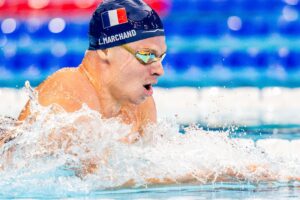
The team brought in Leon Marchand, who already had four gold medals to his name, to swim the breaststroke, shifted Wattel to the fly, and called up Beryl Gastaldello to anchor.
The two front legs had the French in 3rd, but Temple and the Aussies passed the last two legs for the home team and relegated them to a 4th place finish, albeit in another new national record of 3:40.96.
France, like the Aussies, faces a breaststroke issue.
Marchand’s 58.66 was a strong split, but in Singapore, he will be coming straight from the 200 IM semifinals, and as he has already dropped the 200 breaststroke and 200 butterfly from his schedule, it may seem unlikely that he’ll be firing on all cylinders.
The fastest 100 breastroker at Trials for the men was Jeremie Delbis, who was 1:00.17, which is right where the Australians are.
The French, however, lose ground on the other legs.
If they keep Ndoye-Brouard on the back, then Ressencourt’s 58.02 likely takes the fly leg, and Gastaldello (53.60) remains on the free.
The MMFF order (not including Marchand) adds up to a time of 3:44.60, so it may be best to change the order to FMMF, as not only is it faster (3:43.01), thanks in large part to Maxime Grousset‘s 50.11 national record.
Grousset, like Chalmers, likely has the 100 free semifinals, so he could be on a restricted relay schedule.
Canada
Combining the English and French languages and also suffering from a dearth of breaststrokers are the Canadians.
6th in Fukuoka and 5th in Paris, the Canadians have, like the Aussies, played to their key women’s strengths on the backstroke to minimize their losses.
Kylie Masse was faster at this year’s trials (58.18) than she was when she placed 4th in Paris (58.29).
Josh Liendo took on the fly duties in Paris, but was usurped by Ilya Kharun at trials, with the pair going 50.46 and 50.37, respectively, and regardless of who gets tapped, will be a formidable leg on the relay.
Neither of Canada’s top breaststrokers appears in the top 16 of entrants as Alexanne Lepage is seeded with a 1:06.87 and Finlay Knox is entered with a 1:00.66, from the 2024 Canadian trials, as he scratched the event this year.
Knox, too, like Marchand, could be coming from a tough double as the 2024 World Champion will be looking to safely move through the semis of the 200 IM.
He likely could swim in the finals, should they advance, but they may opt to just use Oliver Dawson, who is entered in the 50 and 200 breaststroke but not the 100.
If they stick with a male breaststroker and with the absence of Penny Oleksiak, Taylor Ruck will likely get the nod to anchor, as Summer McIntosh will have the semi-finals of the 200 fly two events before, and like Mary-Sophie Harvey, has a lot of 200s on her schedule.
“To thine own self be true”
Some nations don’t have the depth to make swaps like the Americans, Chinese, and Australians can, often having to use their strengths in the prelims to make the final.
The Dutch and British teams finished 6th and 7th in the final of this relay in Paris after having qualified 4th and 5th fastest in prelims.
The Dutch replaced two swimmers in the final, while the Brits made just one swap.
The changes for the team from the Netherlands were a time improvement as they swapped out their backstrokers and butterflies, and the change in gender earned them a drop of .48.
Their two middle legs, Casper Corbeau and Nyls Korstanje, return and are placed highly in their individual 100s.
Marrit Steenbergen is the presumptive bronze medalist in the 100 free following Siobhan Haughey‘s withdrawal, so much of the Dutch team’s position relies on the backstroke leg of Maaike de Waard.
However, there is an outside chance that Steenbergen will swim the backstroke and Milou Van Wijk will get the nod in the free.

The Brits, the former World Record holders in the event, finished 3rd in the event at the Doha Worlds, but both that team and the Paris team will be very different from their likely line-ups in Singapore.
Adam Peaty did not swim the relay in Paris, and his replacement, James Wilby, is also not making the trip to Worlds.
Neither is backstroker Medi Harris, nor is freestyler Anna Hopkin.
With all the changes, the Brits may buck the trend and use a female breaststroker.
Angharad Evans posted a new British record in the 100 breast at Trials, stopping the clock in 1:05.37, a world-leading time, and she sits 2nd in the entry list.
On the other hand, the fastest entrant for the Brits in the men’s 100 breast is Gregory Butler, who appears as the 20th seed with a time of 59.93.
The math from Trials supports this idea as a MFMF order adds up to a time of 3:43.38, which also allows them to use newly minted record holder Oliver Morgan on the back.
The fly leg is presumptively in the hands of 100 fly winner Ed Mildred, who was 51.80, but the Brits have played around with this relay and have used James Guy, Matt Richards, and Duncan Scott on this leg in the past.
“A plague o’ both your houses”
Likely a cry from the French and Australians, both the Germans and Italians have the depth and talent in the men’s breaststroke that could allow them to be in the race.
Germany’s Melvin Imoudu and Lucas Matzerath are the 2nd and 9th seeds, respectively, in the 100 breast, while the Italians are led by Olympic Champion Nicolo Martinenghi (#3) and Ludovico Viberti (#6).
The Germans are the 9th seeds, while the Italians are the 11th seed, the same spots they finished in the prelims in Paris.
Germany has a strong female flyer in Angelina Kohler, but have no entrants in either the men’s or women’s 100 backstroke.
Lise Seidel won the 100 back in 1:00.93 at German Nationals and is entered in the 200, while the men’s winner is absent.
Vincent Passek is entered in the 50 back for the men, but his 55.30 at German nationals leaves much to be desired.

Germany missed the final by half a second, but used a strong line-up, while the Italians were 1.5 back but did not load the line-up.
While Martinenghi did swim in the prelims, 100 back WR holder and Olympic Champion Thomas Ceccon was absent, with the backstroke duties falling to Michele Lamberti (54.42).
If the Italians make the final, the combo of Ceccon and Martinenghi could likely have them in the lead.
Costanza Cocconcelli was 58.47 off a flying start in Paris, but was 57.72 at Sette Colli, and if she can match that time and turn things over to the newly crowned national record holder in the 100 free, Sara Curtis, then the Italians would be in a very good position.
“What’s in a name?”
The Neutral Athletes B team, represented by swimmers who are citizens of Russia, pose a serious question and could break into the top of the podium if they play their cards right.
The team of Miron Lifintsev, Kirill Prigoda, Arina Surkova, and Daria Klepikova nabbed gold at Short Course Worlds, beating out the American squad of Smith, Lilly King, Dare Rose, and Jack Alexy, 3:30.47 to 3:30.55.
The NAB team has only one female entered in the 100 backstroke, but most likely wouldn’t use her on the relay as both Lifintsev and the #2 performer of all time in the 100 back, Kliment Kolesnikov, are in the meet.
The breaststroke poses an interesting conundrum as Evgenia Chukunova is one of the best in the world at the 200, but Kiril Prigoda looked strong at Worlds in Budapest, taking the silver in all of the breaststroke.
If they load up on the front end with two men, then Klepikova likely takes the fly duties with Daria Trofimova, the free.
Surkova, who was on the fly leg in Budapest, is only entered in the 50 fly and 50 free, so may not have the last 50 needed to keep them in contention.
“To be or not to be”
The Japanese were the last team into the final in Paris, qualifying in 3:44.25, but struggled in the final, finishing last in 3:45.17.
While not a result wished for, making the final was the effort, and in fact, both times were faster than their 7th place finish in front of a home crowd in Fukuoka, the year prior.
Like the Germans, the Japanese have no female 100 backstroker, likely leaving that role to Riku Matsuyama (53.72 entry time).
They have a strong backhalf in Mizuki Hirai and Rikako Ikee, but may be too far back to make a late surge.
The Israeli team was 10th in Paris (3:45.33), a marked improvement upon their 15th-place finish in Fukuoka (3:47.76).
Their shots at making the final are tough, as there are just four women listed on the roster, and both Anastasia Gorbenko and Lea Polonsky are taking on heavy schedules.
If the pair looks good, then the team could make a run, but they might not have the depth to get out of prelims.
“Though this be madness, yet there is method in ‘t.”
This relay is fun, it is chaotic, and with all the potential relay options, lead changes are always exciting because swimmers can make massive differentials based upon where and when a nation uses their stars.
The USA’s front-end issues worry me a little, but in the course of writing this and doing the research, I convinced myself that they are the most likely to win.
McKean on the breaststroke is a big gamble, but with the 100 breast occurring early in the meet, the US will have those times to help make the relay, and Josh Matheny could easily jump into the relay and join his fellow World Junior Record teammates, Walsh and Huske, if he performs better in the individual 100.
The Chinese, with Xu and Qin, seemed like too strong a lead for the US’s strong backhalf to run down, but with Zhang’s middling 100 fly and the slower 100 free times at nationals, it is certainly possible.
It is also certainly possible that Zhang was just doing enough to make the team, and nowhere does it say that China has to use the 100 free winner, Wu, so it still could be close.
After that, it gets a little scarier.
The Aussies’ breaststroke woes are serious, and while they finished over two seconds ahead of the French for the bronze medal, it could get a lot closer.
Not that the French are guaranteed to be in the running for the bronze, as they have to navigate the prelims and still answer the Marchand question.
The NAB team looks strong and could push the Australians for the bronze.
The Aussie women are their strength on this relay but its a question of whether or not they can eat enough into the lead that the NAB men are expected to get.
The same can be said for the Italians, who on paper look very strong, but need to combat their recent prelims performances to ensure a spot in the final.
SwimSwam’s Picks
Place
|
Nation
|
Entry Time
|
National Record
|
Olympic Finish
|
1
|
USA
|
3:37.73
|
3:37.43
|
Gold
|
2
|
China
|
3:37.55
|
3:37.55
|
Silver
|
3
|
NAB
|
N/A
|
3:40.78 (As Russia)
|
N/A
|
4
|
Australia
|
3:38.76
|
3:38.76
|
Bronze
|
5
|
Italy
|
3:45.80
|
3:39.28
|
11th
|
6
|
France
|
3:40.96
|
3:40.96
|
4th
|
7
|
Canada
|
3:41.41
|
3:41.25
|
5th
|
8
|
Netherlands
|
3:43.12
|
3:41.25
|
6th
|
Dark Horse: South Africa– It would take a lot to get right, especially the breaststroke, but Pieter Coetze‘s 51.99 from the World University Games cannot be ignored.
With no Chad le Clos, the team likely turns to Erin Gallagher on the fly, as she was a semifinalist in Paris.
The breaststroke makes things difficult, as it often is, but they used Rebecca Meder at Short Course Worlds to place 10th, so they may tap her and use Matt Sates on the free.
They could also have Chris Smith or Michael Houlie on the breast and tap Aimme Canny or Caitlin de Lange for the free.

 American twice in a mixed relay (You can trust me on that fact, and I’m self deprecating enough to say that both times were in short course meters, and one year I was a part of the only relay in our age category to contest the event that year).
American twice in a mixed relay (You can trust me on that fact, and I’m self deprecating enough to say that both times were in short course meters, and one year I was a part of the only relay in our age category to contest the event that year). Laura Rosado concluded with, “This is why mixed medleys make my head hurt,” and I concur.
Laura Rosado concluded with, “This is why mixed medleys make my head hurt,” and I concur. But that is enough of a preamble, so let’s dive right in (pun intended).
But that is enough of a preamble, so let’s dive right in (pun intended).